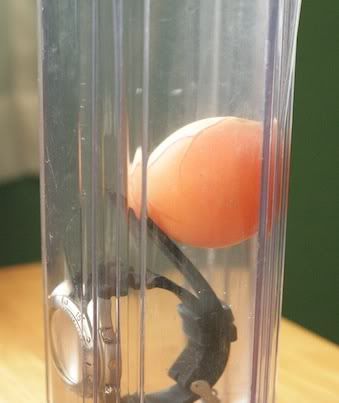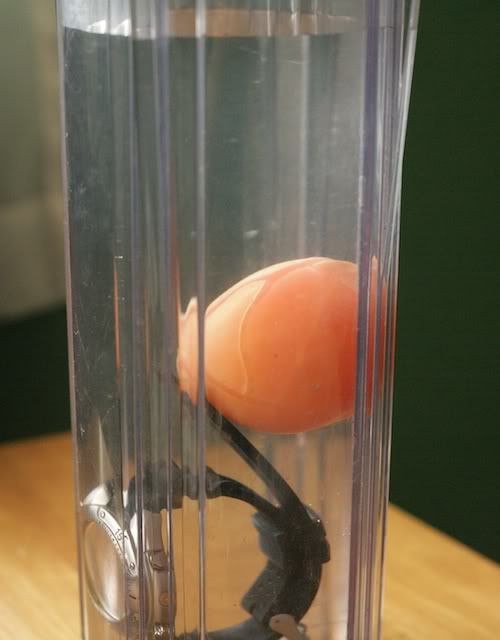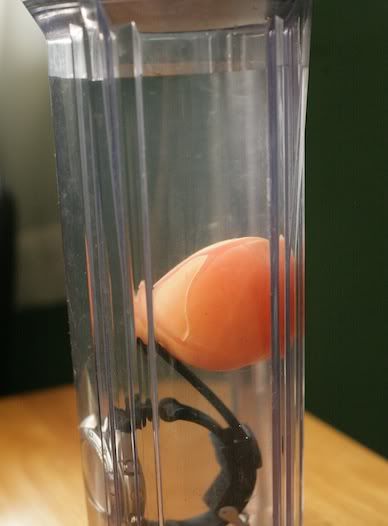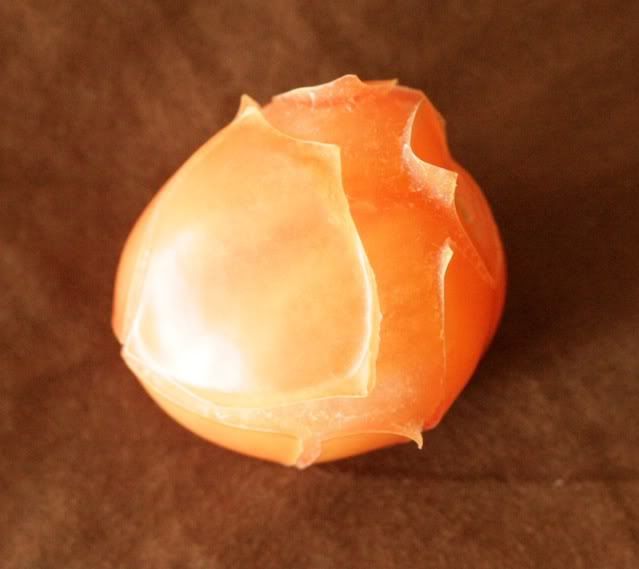Okay Zeke and Rx7, experiment run and you guys can hash out the science of it.
Parameters:
Took a tomato to 50 meters for 15 minutes. There was note of a slight leak so by the time the expt ended, depth was at 42 meters.
Notes:
1. Upon compression, the tomato lost its buoyancy and sank to the bottom.
2. The tomato started to expand (as seen on video) causing cracks on the skin of the tomato.
3. Upon decompression, the skin started to delaminate and the cracks deepened. small bubbles were noted to come out from the tomato. Tomato did not explode.
Tomato at 5 minutes:
Tomato at 10 minutes:
Tomato at 15 minutes:
End result:
Remarks:
1. It is possible that the expansion was caused by the slight decompression induced by the slow leak. With a stable system, maybe there will be less expansion (I'm running low on tomatoes, so further testing will have to wait)
2. Bubbles from the tomato on decompression indicate that there was a degree of gas diffusion into the fruit. Of course it would've been better if I was running a control tomato immersed in water without the variable of the pressure.
3. I would imagine that given enough time and pressure, fruit could be made to explode. I remember reading how Woodshole Oceanographic would have difficulty retrieving specimens of deep sea animals without it disintegrating. Not having this facility, I nominate we elevate this to the mythbusters...
Video to follow. I'm just increasing its speed so you can see the expansion.








